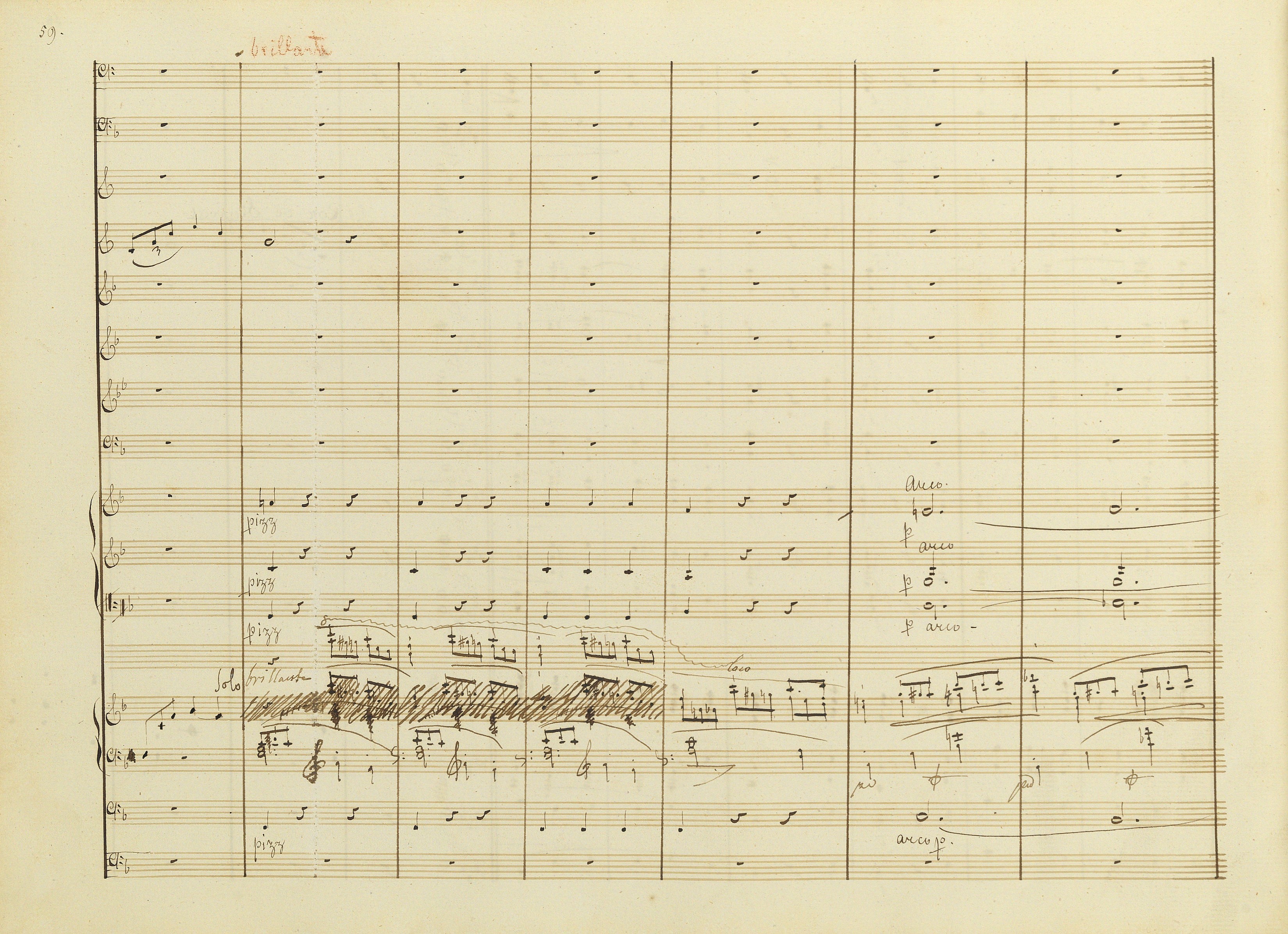



It is uncertain what kind of staccato marks Chopin used in A at the beginning of these bars. The sign in bar 414 seems to be a small wedge, whereas the one in 415 – rather a dot. When repeating this fragment, Chopin wrote only one mark – a dot in bar 454. According to us, one can safely assume that Chopin had one type of marks in mind. The argument for wedges is the rhythmic similarity of these bars to bars 409-410, in which the use of wedges does not raise major doubts. On the other hand, the difference in articulation between these pairs of bars seems to be justified by a harmonic difference, particularly the change of mode from major to minor. In this situation, it is both the dots and the wedges that can be considered to be corresponding to Chopin's intention. No staccato marks in GE1 (→FE→EE) must be an oversight, whereas GE2 added dots.
Compare the passage in the sources »
category imprint: Graphic ambiguousness; Differences between sources
issues: Errors in GE, GE revisions, Wedges
notation: Articulation, Accents, Hairpins




